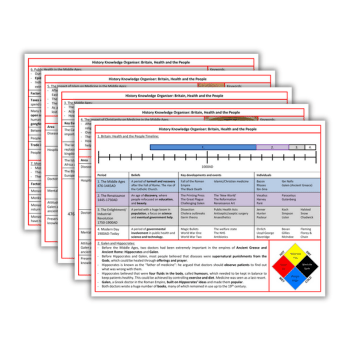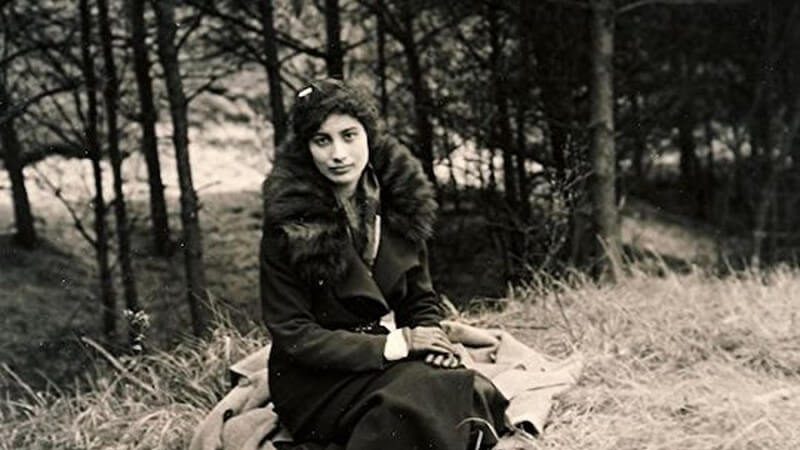Teaching history – Why it pays to take a broader view

Given the importance of the bigger picture when studying history, where are the lessons that give students a large scale historical overview, asks Richard McFahn…

For around 20 years now, history teachers in England seem to have agreed that planning and delivering historical knowledge is best achieved through using an enquiry question. And they’re right.
In a seminal article published by Teaching History in 2000, teacher trainer Michael Riley outlined how enquiry questions should be engaging, focus on an aspect of historical thinking and finish with a meaningful outcome activity that pulls together all the learning that has happened.
This is entirely sound advice.
It’s an approach that works, full stop.
However, one potential drawback of planning your course around a selection of enquiry questions is the way in which this can cause you to jump from topic to topic without presenting a whole view of the course.
In history, it’s pretty damned important to see the big picture, particularly if you want students to focus on the concept of historical change.
It’s all well and good to search for that killer enquiry question, but if you never show your students the long view or overview, your course will lack perspective and meaning, and students will consequently struggle to develop a framework of the past.
Why use overviews?
I’ve been a fan of using big picture overviews for some time. ‘Scale switching’, as the American history education professor Bob Bain calls it, allows students to see the whole of what you’re teaching over a course. It provides perspective.
Curriculum theorist Mary Myatt argues that when students begin a new unit, they need to be able to see where it fits into the wider whole. That way, they can learn the particular by locating it in the general. Sound advice!
Others before her have previously criticised school history courses built around different teaching topics for providing pupils with a ‘bits and pieces’ knowledge of the past that ultimately adds up to very little (see Shemilt, R and Lee, P 2009).
But if we’re honest with ourselves, how often do you present your students with a big picture overview like this? Maybe once, at the beginning of the course?
This year I’ve been working with a group of teachers, helping them think more deeply about their history curriculum. Over 50 of them kindly completed a questionnaire for me, in which most agreed that it was important to get a good balance of overview and depth at KS3.
Many also concurred that a key curriculum aim was to help students develop a ‘big picture’ view of the past. Yet in practice, how often do you do this?
I know that I’ve seldom seen big picture overview lessons being taught. I also know that when analysing different departmental schemes of work as part of the same project, I’ve struggled to identify any big picture overview lessons that cover a certain time period, depth study or thematic study.
Dem Deutschen Volke
So why not take in the view? Help your students see that big picture of the past. Show your classes the whole picture of what you’re teaching, both before and after you dive into the depth. Doing so will give them a better sense of perspective and help to cement their learning.
So how do we do this?
There are many possible approaches, but one we favour is to give out a number of pictures for the kids to ponder over and move around on their desks.
A good example is this lesson planned by Marc Scruby, head of history at Priory School in Lewes, which gets students to consider views of the Reichstag at different points between 1880 and 2004.
A range of interior and exterior photographs are distributed throughout the class; the students’ job is to then match their pictures to a series of separate captions.
This allows them to see what Germany looked like at different points in time and observe the changes between those periods, taking in the geographical and political landscape. It’s an activity that covers the AQA Germany and Cold War course in one go!
There’s a trend among advocates of ‘knowledge-rich’ teaching to suggest that ‘progressive’ teaching methods such as this don’t work, but they’re wrong.
It’s that they simply haven’t seen them planned and delivered properly.
A crime classic
Another way of getting students to see the big picture of the Cold War is to use the ‘What and where was the Cold War?’ lesson available from The History Resource Cupboard, which provides a geographical perspective by showing when and where the key events of the Cold War took place on a world map.
Use it before you dive into the detail.
If you’re teaching crime and punishment, help your students see the whole course in one lesson by having them look at a series of images and work out how the course will be structured.
Get the students to sort the images into different categories of ‘crimes’, ‘crime prevention’ and ‘punishments’, so that they can get an overview of what the course will be teaching them.
Similarly, those teaching the American West can use a lesson created by Elena Stevens, a history teacher at St Philip Howard Catholic School in Chichester.
Students will get to see the period from the different perspectives of Native Americans, homesteaders/migrants and cowboys/ranchers, and get a sense of the big stories that the course will be telling – see ‘Download’ at the end of the feature for more details.
You can also use images in a slightly different way. An intriguing starting point for presenting an overview of the French Revolution could be to ask your class when they think a specific gruesome image – ‘Transporting Corpses during the Revolution’ by Etienne Bericourt – was drawn.
Having established the big picture of the course during the lesson, show your students the key events of the period. By the end of the lesson they’ll be able to confidently date the picture, thus delivering a satisfying outcome for all, and have a sense of course’s shape and scope before you dive into the depth.
I hope these examples of big picture overviews inspire you to let your students take in the view, and appreciate the whole of what you’re teaching them.
Create your own big picture overviews
- Remember that you should be able to work through your big picture framework quickly, within a one-hour lesson.
- You don’t have to cover all the details of the course in your overview; similar to a pencil sketch, concentrate on capturing the main features, then fill in the detail during later lessons.
- You can start new topics by presenting your ‘overview’, but it might be worth revisiting it mid-way through the unit and again at the end.
- Organise your overview around key themes that can be seen across the unit, rather than just a set of random events.
- Pictures from different stages of a specific period will give your students an accessible way to more fully appreciate the topic under discussion.
Richard McFahn is a lecturer in history education at the University of Sussex and a consultant, and runs the sites historyresourcecupboard.com and historyhomework.com.












